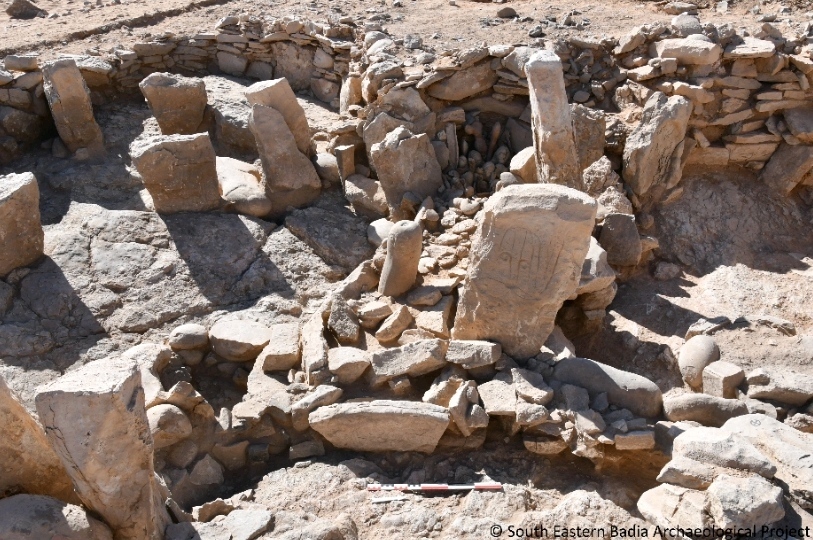
Archaeologists have found a 9,000-year-old shrine at a remote Neolithic site in Jordan’s eastern desert.
The ritual complex was found by a team of Jordanian and French archaeologists in a Neolithic campsite near large structures known as “desert kites”, or mass traps that are believed to have been used to corral wild gazelles for slaughter.
Such traps consist of two or more long stone walls converging toward an enclosure and are found scattered across the deserts of the Middle East.
“The site is unique, first because of its preservation state,” said Jordanian archaeologist Wael Abu-Azziza, co-director of the project.
“It’s 9,000 years old and everything was almost intact.”
 The ritual complex was found in a Neolithic campsite near large structures known as desert kites, or mass traps that are believed to have been used to corral wild gazelles for slaughter (Jordanian Tourism Ministry via AP)
The ritual complex was found in a Neolithic campsite near large structures known as desert kites, or mass traps that are believed to have been used to corral wild gazelles for slaughter (Jordanian Tourism Ministry via AP)
Within the shrine were two carved standing stones bearing anthropomorphic figures, one accompanied by a representation of the “desert kite”, as well as an altar, hearth, marine shells and a miniature model of the gazelle trap.
The researchers said in a statement that the shrine “sheds an entire new light on the symbolism, artistic expression as well as spiritual culture of these hitherto unknown Neolithic populations”.
The proximity of the site to the traps suggests the inhabitants were specialised hunters and that the traps were “the centre of their cultural, economic and even symbolic life in this marginal zone”, the statement said.
The team included archaeologists from Jordan’s Al Hussein Bin Talal University and the French Institute of the Near East.
The site was excavated during the most recent digging season in 2021.


Comments: Our rules
We want our comments to be a lively and valuable part of our community - a place where readers can debate and engage with the most important local issues. The ability to comment on our stories is a privilege, not a right, however, and that privilege may be withdrawn if it is abused or misused.
Please report any comments that break our rules.
Read the rules here